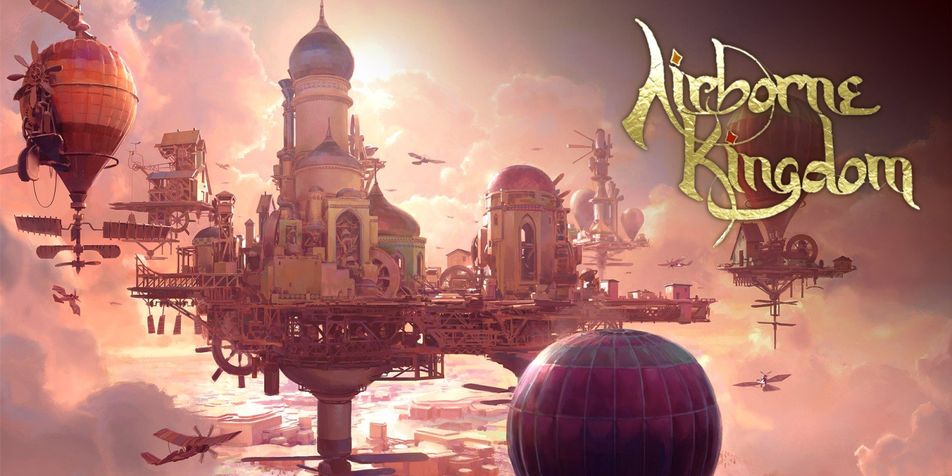Airborne Kingdom
There are many , many, many city builders out there. Some choose to be as accurate reflections of creating a city as possible, complete with taxation, traffic management, and systemic racism zoning restrictions. Others are more lax, setting their cities in a realistic world, but recognising the player is not a city manager, and so provide a pared down city experience. Then there is the entire subset that look at the concept of a city and wonder about the ways in which this concept can be warped or placed into something newer and more exciting than the ordinary. These games think about what comprises their city, or what the purpose of a city actually is. Some might even think critically about the impact a city has.
Airborne Kingdom is one of these.
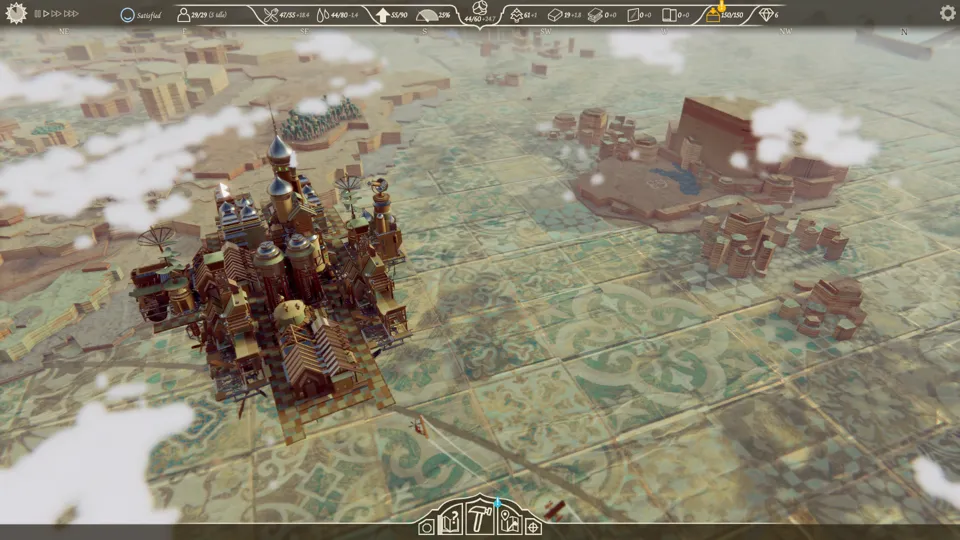 Emphasis on placing a city in an unexpected place.
Emphasis on placing a city in an unexpected place.
Airborne Kingdom is a fantasy city-builder set in a far-off land. The Airborne Kingdom had once roamed this land, facilitating trade and building unity and harmony, but as it fell, so too did that harmony. However, the Airborne Kingdom has been reborn, and is now sailing the skies once again, reuniting kingdoms, re-establishing trade, and bringing harmony across this vast land.
There are several elements in Airborne Kingdom that I hadn’t seen before in a city builder. While every city builder requires the player to have some degree of thought about where they place their buildings or how to structure their roads, Airborne Kingdom takes this to a new extreme. The city itself is both floating and mobile, and the buildings the player places impact both qualities. If there are too many heavy buildings, the city falls. If there is a lack of propulsion, the city stops moving. In addition to considering the usual elements of districting and efficient building placement, the player has to keep the pure mechanical requirements of lift and forward momentum in mind. It presents an interesting new dimension, albeit one that seemed more complex in concept than in actual gameplay. In practice, I resolved these issues by adding in a few fans and propellers, then forgetting about it until they happened to catch my eye again.
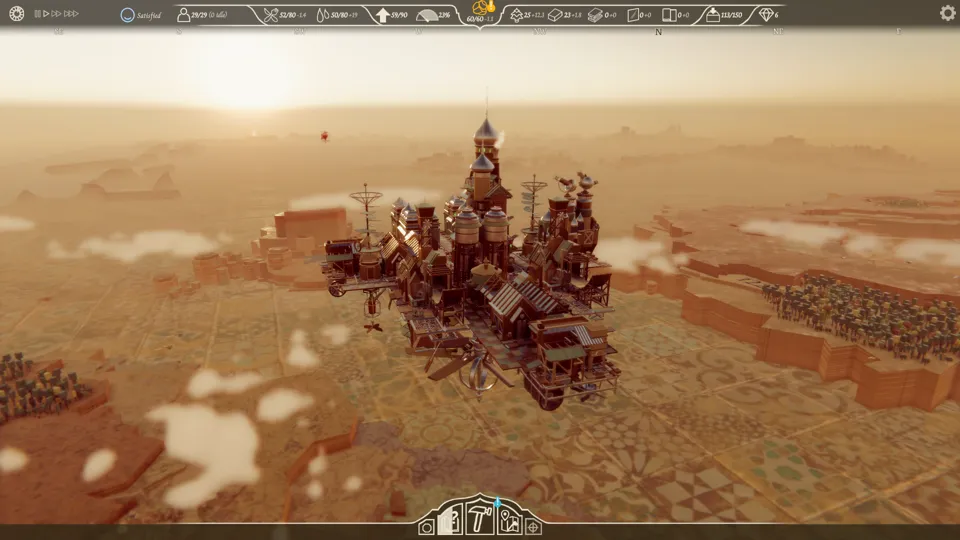 /slaps side You can fit so many fans in this baby.
/slaps side You can fit so many fans in this baby.
It is, of course, important that the city be kept both aloft and moving, as this is more than a pure city builder. Rather than the stationary city that most city builders have you build, in Airborne Kingdom, the kingdom migrates over various biomes, gathering resources it needs as it goes. I found myself parking my city over a coal deposit while an almost literal swarm of workers in biplanes descended like locusts upon the land, scouring it of any and all resources. I watched the numbers on forests and oasis trickle down as I drained them, wondering vaguely about the settlement nearby and how it would survive with all its resources now fed to the behemoth blotting out the sun.
Then I just grabbed all their peasants and plopped them into a biplane to journey with the city and begin the cycle anew.
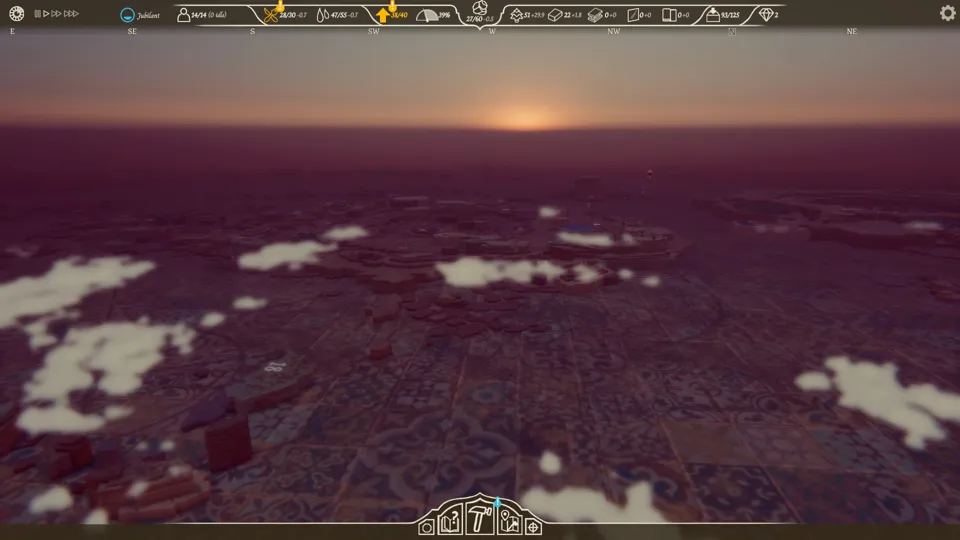 The sun sets on another beautiful day of conquest.
The sun sets on another beautiful day of conquest.
The city gathers these resources and propels itself forward with the idea that, at the end of the journey, it will reunite the various independent kingdoms and re-establish trade and prosperity. However, as I arrived at each city, I wondered more and more if that was actually what I was doing. At each city, I received a quest, generally to go find something or rescue someone or help with a particular building project. These quests were simple enough, and indeed, I didn’t really think too hard about any of them. The challenge of the game is less in the relationship you establish with the various kingdoms, and more with finding them and reaching them in the first place. The goal of the game, I’d argue, isn’t the one the game sets out for you. Rather, it is growth. The airborne kingdom grows, and it does so incidentally to whether or not it helps these smaller kingdoms. I didn’t need any of them at any point to keep growing. All I need was to absorb their resources, then keep traveling, keep moving, and do the same somewhere else.
At some point, I started to feel a bit like the Borg.
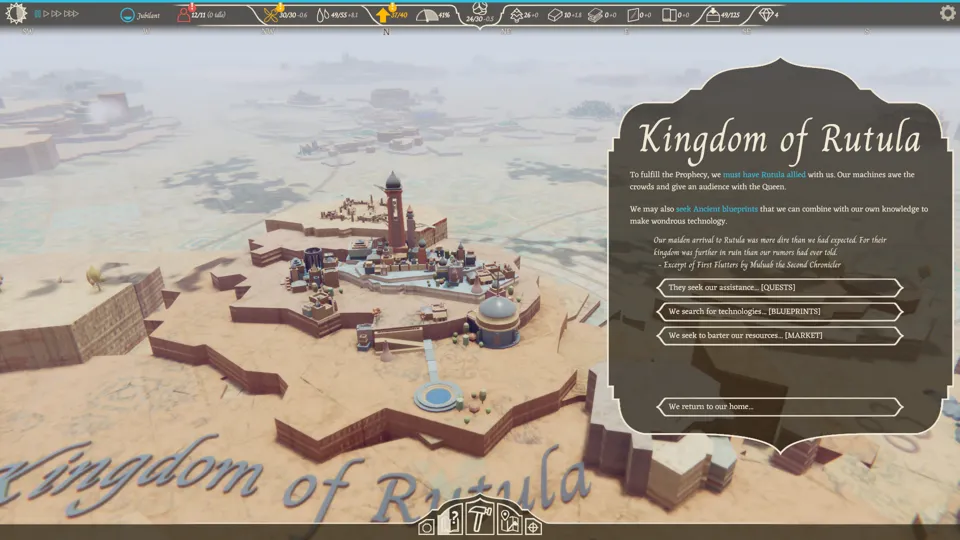 Except with way better design sense
Except with way better design sense
I’ve seen this clash of what a city builder wants and what I actually ending up doing with it before, most notably with Before We Leave , and much like that game, it was in considering this question and the impact my city actually has on the environment around it that I got a lot more out of the game. Don’t get me wrong - Airborne Kingdom is a lovely game. I found the movement of the city across mosaic tiles and the joy of finding a much-needed resource excellent. The music is lovely, and the city design itself is wonderful. I wonder about the message behind it, though, and the idea it presents of what a migrating city could actually be. The game believes the airborne kingdom can function as a benevolent ruler, leading its fellows through the darkness into an age of prosperity and light. As I played it, the airborne kingdom is a scourge, but one that the other kingdoms engage with with a sense of reverent awe. There is no age of prosperity and light ahead - the airborne kingdom is that light.
Or maybe the Airborne Kingdom is just a game with a beautiful city floating over a peaceful world, and I read too much into it.
Before I descend.
Developer: The Wandering Band
Genre: City Builder
Year: 2022
Country: Canada
Language: English
Play Time: 8-10 Hours
Youtube: https://youtu.be/ME6sODCIFUY
